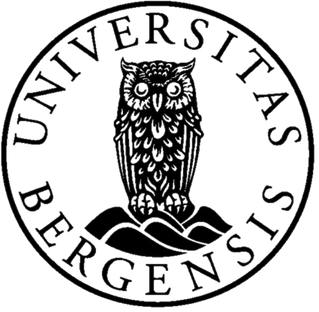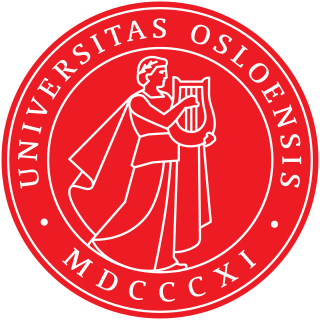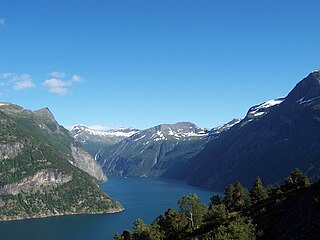
The University of Bergen is a public research university located in Bergen, Norway. As of 2021, the university has over 4,000 employees and 19,000 students. It was established by an act of parliament in 1946 based on several older scientific institutions dating back to 1825, and is Norway's second-oldest university. It is considered one of Norway's four "established universities" and has faculties and programmes in all the fields of a classical university including fields that are traditionally reserved by law for established universities, including medicine and law. It is also one of Norway's leading universities in many natural sciences, including marine research and climate research. It is consistently ranked in the top one percentage among the world's universities, usually among the best 200 universities and among the best 10 or 50 universities worldwide in some fields such as earth and marine sciences. It is part of the Coimbra Group and of the U5 group of Norway's oldest and highest ranked universities.

The University of Oslo is a public research university located in Oslo, Norway. It is the oldest university in Norway. Originally named the Royal Frederick University, the university was established in 1811 as the de facto Norwegian continuation of Denmark-Norway's common university, the University of Copenhagen, with which it shares many traditions. It was named for King Frederick VI of Denmark and Norway, and received its current name in 1939. The university was commonly nicknamed "The Royal Frederick's" before the name change, and informally also referred to simply as Universitetet.

The University of Tromsø – The Arctic University of Norway is a state university in Norway and the world's northernmost university. Located in the city of Tromsø, Norway, it was established by an act of parliament in 1968, and opened in 1972. It is one of ten universities in Norway. The University of Tromsø is the largest research and educational institution in Northern Norway and the sixth-largest university in Norway. The university's location makes it a natural venue for the development of studies of the region's natural environment, culture, and society.
Nynorsk is one of the two official written standards of the Norwegian language, the other being Bokmål. From 12 May 1885, it became the state-sanctioned version of Ivar Aasen's standard Norwegian language (Landsmål) parallel to the Dano-Norwegian written language, Riksmål. Nynorsk became the name in 1929, and it is after a series of reforms still a variation which is closer to Landsmål, whereas Bokmål is closer to Riksmål and Danish.

Stavanger is a city and municipality in Norway. It is the third largest city and third largest metropolitan area in Norway and the administrative center of Rogaland county. The municipality is the fourth most populous in Norway. Located on the Stavanger Peninsula in southwest Norway, Stavanger counts its official founding year as 1125, the year the Stavanger Cathedral was completed. Stavanger's core is to a large degree 18th- and 19th-century wooden houses that are protected and considered part of the city's cultural heritage. This has caused the town center and inner city to retain a small-town character with an unusually high ratio of detached houses, and has contributed significantly to spreading the city's population growth to outlying parts of Greater Stavanger.

Sandnes is a city and municipality in Rogaland, Norway. It lies immediately south of Stavanger, the 4th largest city in Norway, and together the Stavanger/Sandnes area is the third-largest urban area in Norway. The urban city of Sandnes lies in the extreme western part of the vast municipality and it makes up about 5% of the total land area of the municipality.

Time is a municipality in Rogaland county, Norway. It is located in the traditional district of Jæren. The administrative centre of the municipality is the town of Bryne. Some villages in the municipality include Kvernaland, Lyefjell, Mossige, and Undheim. Most of Time is fairly flat and it is used for agriculture. The eastern portion of the municipality is more rugged moorland.

The Norwegian University of Science and Technology is a public research university in Norway and the largest in terms of enrollment. The university's headquarters is located in Trondheim, with regional campuses in Gjøvik and Ålesund.

The University of Agder, formerly known as Agder College and Agder University College, is a public university with campuses in Kristiansand and Grimstad, Norway. The institution was established as a university college (høgskole) in 1994 through the merger of the Agder University College and five other colleges, including a technical college and a nursing school, and was granted the status of a full university in 2007.

Western Norway is the region along the Atlantic coast of southern Norway. It consists of the counties Rogaland, Vestland, and Møre og Romsdal. The region has no official or political-administrative function. The region has a population of approximately 1.4 million people. The largest city is Bergen and the second-largest is Stavanger. Historically the regions of Agder, Vest-Telemark, Hallingdal, Valdres, and northern parts of Gudbrandsdal have been included in Western Norway.
Bergensk or Bergen dialect is a dialect of Norwegian used in Bergen, Norway. It is easy for Norwegians to recognise, as it is more distinguishable from other dialects in Vestland than, for example, the Stavanger dialect (Stavangersk) from the dialects of Rogaland, and the Trondheim dialect from Trøndelag dialects.
The Royal Ministry of Education and Research is a Norwegian government ministry responsible for education, research, kindergartens and integration. The ministry was established in 1814 as the Royal Ministry of Church and Education Affairs.
Åse-Marie Nesse was a Norwegian philologist, translator and poet.

Mari Rege is a Norwegian economist and professor of economics at the University of Stavanger. Appointed there in 2009, she is the youngest such professor to be appointed in Norway. She specializes in family, gender equality, working life, and school performance issues.
Stavangersk, Stavanger dialect or Stavanger Norwegian is a dialect of Norwegian used in Stavanger.

The University of South-Eastern Norway, commonly known as USN, is a Norwegian state university. It has campuses in Bø in Telemark, Porsgrunn, Notodden, Rauland, Drammen, Hønefoss, Kongsberg and Horten. USN is a continuation of the three former university colleges, Telemark University College, Buskerud University College and Vestfold University College, which merged between 2014 and 2016 to form the University College of South-Eastern Norway. The institution was granted the status of a full university by the King-in-Council on 4 May 2018.
The UiS Business School is a business school situated in Stavanger, Norway, and a faculty under the University of Stavanger. The business school is one of the largest institutions in Norway educating students at the masters level in business administration.
Kjersti Engan is a Norwegian researcher in signal and image processing who works as a professor of electrical engineering and computer science at the University of Stavanger.

Siri Margrethe Kalvig is the founder and former managing director of the weather forecasting company Storm Weather Center, which was established in 1997. In 2014 she completed her doctorate in offshore technology at the University of Stavanger. Before that, she managed the Storm Weather Center's Stavanger office. She has also been a board member at the University of Stavanger in the period 2007 to 2009. Since 2018, she has been managing director of the state-owned company Nysnø Klimainvesteringer.













